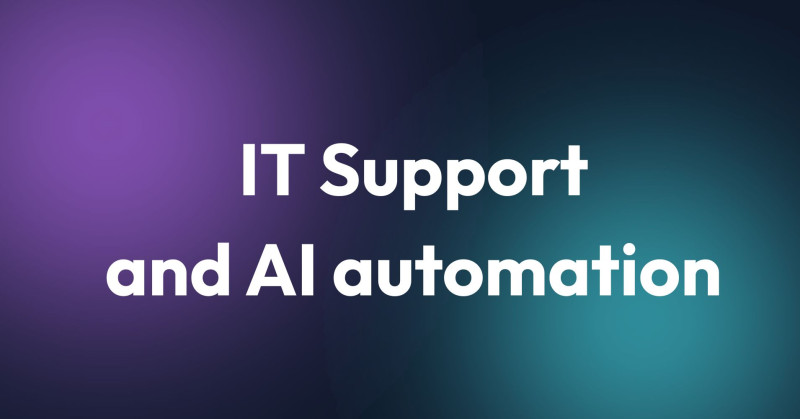In the face of growing environmental concerns and increasing demand for transparency, the European Union has introduced the Corporate Sustainability Reporting Directive (CSRD). This directive marks a significant step towards enhancing corporate accountability and fostering sustainable business practices. Understanding the CSRD is crucial for companies aiming to stay compliant and demonstrate their commitment to sustainability.

From this article, you will learn more about European sustainability reporting standards and how to comply with the CSRD.
What Is the EU Corporate Sustainability Reporting Directive?
The Corporate Sustainability Reporting Directive (CSRD) is an EU non-financial reporting directive designed to improve and standardize sustainability reporting across various industries passed by the European Parliament in 2022.
This new directive expands the reporting scope and introduces new requirements for companies across the EU. The new CSRD aims to improve the quality and consistency of sustainability disclosures. Under the CSRD, a broader range of companies will be required to report on their sustainability practices. This directive will introduce standardized reporting frameworks to ensure that sustainability information is comparable and reliable across the EU.
European Green Deal and SFDR: EU Sustainability Strategy
The Green Deal is the European Union's ambitious and comprehensive plan to make the EU's economy sustainable by transforming climate and environmental challenges into opportunities across all policy areas. It aims to achieve net-zero greenhouse gas emissions by 2050, decoupling economic growth from resource use, and ensuring that no person and no place is left behind.
The European Green Deal provides the overarching vision and goals for a sustainable Europe, while the CSRD provides the mechanisms for monitoring and reporting progress towards these goals. Together, they create a robust framework that drives environmentally friendly transformation across the EU.
Another EU directive aiming to make organizations more eco-friendly is the Sustainable Finance Disclosure Regulation. SFDR is a regulatory framework established by the European Union to enhance transparency and provide standardization in sustainability-related disclosures made by financial market participants and financial advisers.
The SFDR aims to improve the quality and comparability of sustainability-related information provided to investors, thereby promoting sustainable investment and preventing greenwashing (the practice of making misleading claims about the environmental benefits of a product, service, or company).
Key objectives of the SFDR include enhancing transparency, preventing greenwashing, and promote environmentally friendly investment.
Does CSRD Apply to My Company?
Under the CSRD, the reporting requirements will be phased in over several years. Firsts reports which are due 2025 will apply to EU companies that meet two of three conditions:
Total assets of more than €25 million
Net turnover of more than €50 million.
More than 250 employees
It includes all companies already subjected to the NFRD, companies previously not subjected to NFRD but meeting the criteria, and non-European companies with significant business in the EU.
In 2026 all large companies not currently subjected to the NFRD will have to report. In 2027 - small and medium-sized enterprises and other organization meeting the requirements. SMEs can wait until 2030.
Important: Large public-interest entities (PIEs) that are already subject to the NFRD will have to comply with CSRD first, starting in 2024 for the financial year 2023. This includes listed companies, banks, insurance companies, and other designated entities.
Key Components of the CSRD
The directive is built around several key components that collectively aim to enhance transparency, accountability, and the overall quality of sustainability information disclosed by companies.

Expanded Scope
One of the most notable changes brought by the CSRD is its expanded scope, which broadens the applicability of sustainability reporting requirements to a much larger pool of companies. Previously, only a select group of large public interest entities were subject to these reporting obligations. However, under the CSRD, all large companies, as well as listed companies—excluding listed micro-enterprises—are now required to disclose detailed sustainability data.
This expansion means that thousands of additional businesses, many of which may have previously operated with minimal reporting obligations, must now navigate the complexities of sustainability disclosure. The inclusion of subsidiaries within larger corporate groups further underscores the directive’s comprehensive approach, ensuring that sustainability reporting reflects the full scope of a company’s operations, rather than just the parent entity.
Enhanced Reporting Requirements
The CSRD also introduces enhanced reporting requirements that demand more detailed and forward-looking disclosures on a wide range of sustainability issues. Companies are now expected to provide in-depth information on environmental, social, and governance (ESG) factors, going beyond basic metrics to include nuanced data such as carbon emissions, resource usage, social impact, and the structures governing these efforts. This level of detail is crucial for stakeholders who seek to understand not just a company’s current sustainability performance, but also its future risks and opportunities in this domain. To support consistency and comparability across reports, the CSRD aligns with established frameworks like the Global Reporting Initiative (GRI) and the Task Force on Climate-related Financial Disclosures (TCFD), setting a standardized framework that companies must adhere to. This alignment helps ensure that the data reported is both reliable and comparable across different sectors and regions.
Assurance and Digitization
Another cornerstone of the CSRD is the introduction of mandatory assurance for sustainability information. Companies are now required to have their sustainability data independently audited or assured, a move designed to enhance the credibility and reliability of the information disclosed.
This mandatory assurance acts as a check against greenwashing and other forms of misrepresentation, holding companies accountable for the claims they make about their sustainability efforts. Furthermore, the directive emphasizes the importance of digital reporting, requiring companies to submit their data in a machine-readable format.
This push towards digitization is not just about convenience; it facilitates easier access to and analysis of sustainability data by stakeholders, including investors, regulators, and the public. By promoting greater transparency and engagement, digital reporting also supports the broader goal of driving corporate accountability and fostering sustainable business practices across the EU.
The Importance of Compliance with Sustainability Reporting Standards
Compliance with the CSRD is not just about meeting regulatory requirements; it is also an opportunity for companies to demonstrate their commitment to sustainability and build trust with stakeholders. Transparent and reliable sustainability reporting can enhance a company’s reputation, attract investment, and improve long-term business resilience.
Challenges Posed by New Corporate Sustainability Reporting Directive across the European Union
The introduction of the new Corporate Sustainability Reporting Directive (CSRD) across the European Union has brought forth a host of challenges for companies striving to comply with the heightened demands of sustainability reporting. These challenges are multifaceted, spanning from data collection to adapting to new standards, each requiring careful attention and strategic investment.
Data Collection and Management
One of the most pressing challenges posed by the CSRD is the comprehensive data needs it necessitates. Companies must gather a wide array of sustainability metrics, ranging from environmental impact to social responsibility indicators. This isn't just about accumulating data; it requires the development and implementation of robust systems capable of collecting, managing, and analyzing vast amounts of information.
For many organizations, this means investing in new technologies and platforms that can handle the increased data load while ensuring accuracy and consistency. The complexity of these tasks is compounded by the need for seamless integration with existing financial and operational processes.
This integration often demands significant adjustments, not only in terms of technology but also in training employees to adapt to new workflows and procedures. The process can be time-consuming and costly, yet it is essential for achieving compliance and deriving meaningful insights from the data.
Adapting to New Standards
Beyond data management, companies face the challenge of adapting to the new standards introduced by the CSRD. The learning curve can be steep, as these standards are both complex and comprehensive, covering various aspects of sustainability reporting that many companies may not have previously addressed in such depth. To effectively implement these standards, organizations must invest in extensive training and capacity-building initiatives. This may involve upskilling existing staff or bringing in external experts to guide the transition.
Moreover, the landscape of sustainability reporting is continuously evolving. As new standards and regulations are developed, companies must stay agile, constantly updating their reporting processes to remain compliant and competitive. This requires not only a commitment to ongoing education and process improvement but also a proactive approach to anticipating future changes in the regulatory environment. The ability to adapt quickly to these changes will be a key determinant of success in the new era of corporate sustainability reporting.
Penalties for Non-compliance to EU's CSRD
One of the primary enforcement mechanisms for non-compliance with the CSRD is the imposition of financial penalties. These fines can be substantial, varying based on the severity and duration of the non-compliance.
Companies that fail to submit their sustainability reports on time, provide incomplete or inaccurate information, or do not adhere to the reporting standards set by the ESRS can face large fines. These financial penalties are designed to ensure that companies take their reporting obligations seriously and allocate the necessary resources to meet the requirements.
Non-compliance with the CSRD can also result in various legal and operational consequences. Regulators may impose operational restrictions on non-compliant companies, such as limiting their ability to raise capital or participate in certain markets. Additionally, companies may face legal challenges from stakeholders who demand greater transparency and accountability. These legal and operational consequences can disrupt business operations, leading to increased costs and strategic setbacks.
Leveraging AI for Effective CSRD Reporting
As companies navigate the complexities of CSRD compliance, AI-powered solutions are emerging as critical tools in simplifying and enhancing the reporting process. The EU Corporate Sustainability Reporting Directive (CSRD) requires organizations to meet detailed sustainability disclosure standards, and AI can play a transformative role in helping companies efficiently manage these requirements.

Automated Data Collection and Analysis
AI-driven platforms can significantly streamline the data collection process by automating the gathering of sustainability data from various sources, including financial systems, supply chains, and other operational areas. This automation reduces the manual effort required, minimizes the risk of human error, and ensures that the data is both accurate and up-to-date. AI can also analyze large datasets quickly, identifying patterns and insights that might be missed through traditional methods, which is crucial for complying with the CSRD’s detailed reporting requirements.
Enhanced Predictive Capabilities
One of the significant advantages of AI in CSRD reporting is its predictive capabilities. AI algorithms can forecast sustainability performance based on historical data, helping companies anticipate areas where they might fall short of CSRD requirements. This allows organizations to take proactive measures to improve their sustainability practices and ensure they meet the EU Sustainability Reporting Standards. Additionally, AI can help companies simulate different scenarios, assessing the potential impacts of various sustainability strategies on their overall performance and compliance status.
Natural Language Processing for Reporting
Natural Language Processing (NLP) is another AI technology that can be leveraged to enhance CSRD reporting. NLP can process and interpret vast amounts of unstructured data, such as text from sustainability reports, corporate disclosures, and regulatory documents. By using NLP, companies can automatically generate reports that align with the EU Corporate Sustainability Reporting Directive, ensuring that all required information is included and presented in a clear and coherent manner. NLP can also assist in cross-referencing sustainability data with relevant EU directives, including the Sustainable Finance Disclosure Regulation (SFDR), to ensure comprehensive compliance.
Real-Time Monitoring and Reporting
AI technologies enable real-time monitoring of sustainability metrics, providing companies with up-to-the-minute insights into their sustainability performance. This is particularly valuable for organizations required to report on sustainability across complex supply chains. Real-time monitoring ensures that any deviations from sustainability goals are quickly identified and addressed, supporting continuous improvement in sustainability practices. Furthermore, AI-powered dashboards can provide a clear overview of the company’s sustainability data, making it easier for decision-makers to track progress and prepare for CSRD compliance.
Integration with Existing Systems
AI solutions can seamlessly integrate with a company’s existing financial and sustainability reporting systems, ensuring that all data flows into a central platform for easy management and reporting. This integration is vital for companies that need to comply with both the CSRD and other EU sustainability reporting requirements, such as those outlined in the EU taxonomy. By centralizing data management, AI helps companies maintain consistency across their reports, ensuring that all disclosed information is accurate and aligned with the European Commission’s guidelines.
Improving Transparency and Accountability
Transparency is a key requirement of the CSRD, and AI can enhance this by providing clear, traceable records of all sustainability data and reporting processes. AI can help ensure that the sustainability disclosures are transparent and that they meet the expectations of stakeholders, including regulators, investors, and the wider public. By improving transparency, AI contributes to building trust and credibility in a company’s sustainability efforts.
Do You Need Help to Comply with CSRD?
Technology plays a crucial role in simplifying CSRD. With the right tools and guidance, companies can successfully meet the reporting requirements and leverage the benefits of transparent sustainability disclosures. Embrace technology and let us help you streamline your CSRD compliance today - contact us and comply with CSRD without stress!





















